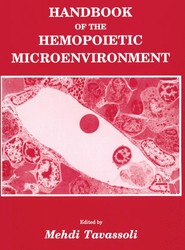(To see other currencies, click on price)
MORE ABOUT THIS BOOK
Main description:
Regulation of malignant cell growth by the immune system has been extensively studied by cancer researchers hoping to develop immuno therapeutic approaches to cancer management. For years these studies revolved around the recognition and destruction of tumors by cytotox. ic immune effector cells. Recently, however, attention has focused on the leukolysins, which are the soluble cytotoxic molecules secreted by activated leukocytes, because of their anticancer activities. The purpose of this book is to give an overview of the ieukolysins, with emphasis on their ability to regulate malignant cell growth. Because this is such a new field in cancer research, there remains some confusion regarding the tenninology of. and biological activity ascribed to, the different leukolysins. Therefore, we sought to present a comprehensive review of the leukolysins currently under intensive study and to compare and contrast their biological activities in an attempt to clarify the nature of these diverse biological species. This book is intended for both immunologists conducting basic research and clinical oncologists, since it reviews not only the clinical applications of the leukolysins, but presents a current update on those leukolysins that are in early developmental stages of research and could enter into clinical trials in a few years. The introduction gives an overview of the status of research on the leukolysins. In the first section, the biological activities and biochemical characteristics of the leukolysins are presented. The lymphokines.
Contents:
1. Biology and Biochemistry.- 1. The Interferons.- 2. Lymphotoxin.- 3. TNF.- 4. Natural Killer Cell Cytotoxic Factor (NKCF).- 5. Leukoregulin.- 6. Macrophage Cytotoxic Factors.- 7. Cytolysin.- References.- Cytolytic Pore-Forming Proteins.- 1. Introduction.- 2. Entamoeba histolytica.- 2.1. Contact-Dependent Cytolysis Produced by Amebae.- 2.2. Properties of the Pore-Forming Protein Isolated from Amebae.- 3. Cytotoxic T-Lymphocytes and NK-Like Cells.- 3.1. Nature of Cytolysis Mediated by CTLs and NK Cells.- 3.2. Cytolytic Granules from Effector Cells.- 3.3. Properties of the Pore-Forming Protein Isolated from Granules.- 4. Eosinophils.- 4.1. Eosinophils Mediate Cell Killing by a Contact-Dependent Mechanism.- 4.2. Eosinophil Cationic Protein as a Pore-Forming Protein.- 5. Complement Cascade and the Ninth Component of Complement.- 5.1. Polymerization of C9 into Functional and Structural Ion Channels.- 5.2. Relationship Between C9 and Pore-Forming Protein from Lymphocytes.- 6. Conclusion.- References.- Cytolysin: Its Purification, Biological Properties, and Mechanisms of Action.- 1. Introduction.- 2. Isolation of Cytolytic Granules and Purification of Cytolysin.- 3. Biological Properties of Cytolysin.- 4. Mechanism of Action.- 5. Summary.- References.- Monocyte Cytotoxic Factors.- Triggering of a Cytolytic Factor with TNF-Like Activity From Human Monocytes.- 1. Introduction.- 2. Results and Discussion.- 2.1. Role of LPS as a Critical Signal for Triggering Monocyte-Mediated Cytotoxicity.- 2.2. Monocyte Killing of Wehi/D Is Contact-Dependent and Cytolytic Factor Is TNF-Like.- 2.3. Target-Cell Selectivity and Capacity to Induce CM Production in Monocytes.- References.- Antitumor Monocyte Cytotoxic Factors (MCF) Produced by Human Blood Monocytes: Production, Characterization, and Biological Significance.- 1. Introduction.- 2. Generation of MCF.- 2.1. Cells Involved in MCF Production and Release.- 2.2. Optimal Conditions for MCF Generation.- 2.3. Augmentation of MCF Generation.- 3. Lytic Activity of MCF.- 3.1. Kinetics of Lysis.- 3.2. Augmentation of MCF-Mediated Lysis by Actinomycin D.- 3.3. Enhancement of MCF Activity by IFN.- 4. Biochemical and Biophysical Characteristics of MCF.- 4.1. Temperature Stability of MCF.- 4.2. Sensitivity of MCF to Proteolytic Enzyme.- 4.3. Effect of Protease Inhibitors on MCF Activity.- 4.4. Other Physicochemical Characteristics of MCF.- 5. Biological Significance of MCF.- 5.1. Target Cell Specificity of MCF.- 5.2. Biological Role of MCF in Human Neoplasia.- 6. Conclusion.- References.- Antiproliferative Effects of Interferon.- 1. Introduction.- 2. Structure of Interferon.- 2.1. Gene Structure.- 2.2. Protein Structure.- 3. Interferon Receptors.- 3.1. Types and Affinities of Receptors.- 3.2. Receptor Interactions with the Cytoskeleton.- 4. Mechanisms of Action.- 4.1. Intracellular Messengers.- 4.2. Alterations in Gene Expression.- 4.3. Cell Cycle Progression.- 5. In Vitro Antiproliferative Effects.- 5.1. Assays for Interferon Activity.- 5.2. Cells Inhibited by Interferon.- 5.3. Differentiation Affected by Interferon.- 5.4. Interferon Synergisms.- 6. Structure-Function Relationships.- 7. In Vivo Tumor Biology.- 7.1. Antibodies to Interferon.- 7.2. Interferon-Resistant Tumors.- 7.3. Xenografts in Nude Mice.- 7.4. Direct vs. Indirect Effects.- 8. Conclusion.- References.- Natural Killer Cell Cytotoxic Factor.- Human and Rodent Natural Killer Cytotoxic Factors (NKCF): Characterization and Their Role in the NK Lytic Mechanism.- 1. Introduction.- 2. Materials and Methods.- 2.1. Production of NKCF.- 2.2. Assay of NKCF.- 3. Results and Discussion.- 3.1. NK Cells Produce NKCF.- 3.2. Mechanism of NKCF Release and Its Regulation.- 3.3. Mechanism of Action of NKCF.- 3.4. Properties That Determine NK Sensitivity in a Tumor Cell Line.- 3.5. Biochemical Characterization of NKCF.- 3.6. Relationship of NKCF to Other Cytotoxins.- 4. Concluding Remarks.- References.- Human Natural Killer Cytotoxic Factor (NKCF): Relevance, Mode of Action, and Relationship to Other Cytotoxic Factors.- 1. Introduction.- 2. Results.- 2.1. Production of NKCF by Human LGL.- 2.2. Biochemical Characterization of Purified NKCF.- 2.3. Relationship of NKCF to Other Cytotoxic or Cytostatic Effectors.- 3. Discussion.- References.- Natural Killer Cell Cytotoxic Factor.- 1. Introduction.- 2. Biology of NKCF.- 2.1. Generation of NKCF.- 2.2. NKCF Receptor.- 2.3. NKCF as an Immunoregulatory Factor.- 3. Biochemistry of NKCF.- 3.1. Molecular Weights.- 3.2. Susceptibility to Chemical Attack and pH.- 3.3. Temperature Stability.- 3.4. Susceptibility to Enzymatic Attack.- 4. Mechanism of Action of NKCF.- 4.1. Kinetic Model for NKCF-Mediated Lysis.- 4.2. Effects of Chemical Crosslinking Agents.- 4.3. Effects of Agents That Break Disulfide Bonds.- 4.4. Effects of Inhibitors of Serine Proteases.- 4.5. Effects of Membrane Active Agents.- 4.6. Effects of Inhibitors of Receptor-Mediated Endocytosis.- 5. Future Studies.- References.- Leukoregulin.- Leukoregulin: Biology, Biochemistry, and Mode of Action.- 1. Introduction.- 2. Biology of Leukoregulin.- 2.1. Cell Source of Leukoregulin.- 2.2. Bioassays.- 2.3. Target Cell Sensitivities.- 2.4. Relationship of Leukoregulin to Other Cytotoxic Lymphokines.- 2.5. Leukoregulin Species Specificity.- 2.6. Mechanism of Action.- 3. Physicochemical Characteristics of Leukoregulin.- 3.1. Leukoregulin Sensitivity to pH and Enzymatic Digestion.- 3.2. Molecular Weight.- 3.3. Isoelectric pH.- 3.4. Stability.- 4. Conclusions.- References.- Leukoregulin Mechanisms of Anticancer Action.- 1. Discovery of Leukoregulin.- 2. Assays Defining Leukoregulin Activity.- 2.1. Cytostasis-Inhibition of Cell Proliferation.- 2.2. Cytolysis-Target Cell Dissolution.- 2.3. Inhibition of Target Cell Transformation and Tumor Cell Outgrowth.- 2.4. Augmentation of Target Cell Sensitivity to Natural Killer Lymphocyte Cytotoxicity.- 2.5. Destabilization of the Target Cell Membrane.- 3. Preparation of Leukoregulin.- 3.1. Cell Sources and Stimuli for Induction.- 3.2. Isolation Procedures and Retention of Biological Activity.- 4. Pathways of Leukoregulin Action.- 5. Role of Leukoregulin in Homeostasis and Pathophysiology.- 6. Therapeutic Implications and Research Directions.- References.- Lymphotoxins: Mediators of Cellular Activation, Inflammation, and Cell Lysis That Are Immunologically Related to Macrophage Toxins and Tumor Necrosis Factors.- 1. Introduction.- 2. Studies of Lymphotoxin from Normal Lymphocytes.- 2.1. Human B-Cell Lymphotoxin.- 2.2. Human T-Cell Lymphotoxin.- 3. Immunological Relationships of LT-1, LT-2, LT-3, MCT, and TNF.- 4. Effects of Lymphotoxins on Cells In Vitro.- 5. Antitumor Effects of Lymphotoxins In Vivo.- 6. Lymphotoxins as Inducers of Inflammation.- 7. Conclusion.- References.- Tumor Necrosis Factors Alpha and Beta: A Family of Biochemically Related Cytokines.- 1. History of Tumor Necrosis Factors.- 2. Nomenclature: In Vivo Necrosis Activities.- 3. HuTNF-? and HuTNF-?: Biochemistry and Molecular Biology.- 3.1. Bioassays.- 3.2. HuTNF-? and HuTNF-? Induction Schemes.- 3.3. HuTNF-?.- 3.4. HuTNF-?.- 3.5. Amino Acid Homologies.- 4. Summary.- References.- 2. Clinical Applications Interferons.- Clinical Aspects of Interferon Therapy in Human Cancer.- 1. Introduction.- 2. Human Trials.- 3. Solid Malignancies.- 3.1. Osteosarcoma and Soft Tissue Sarcoma.- 3.2. Melanoma.- 3.3. Breast Cancer.- 3.4. Renal Cell Carcinoma.- 3.5. Kaposi's Sarcoma.- 3.6. Colorectal Adenocarcinoma.- 3.7. Carcinoid.- 3.8. Lung Cancer.- 3.9. Ovarian Carcinoma.- 3.10. Bladder Carcinoma.- 3.11. Head and Neck Carcinoma.- 3.12. Cervical Cancer.- 4. Hematologic Malignancies.- 4.1. Hairy Cell Leukemia.- 4.2. Non-Hodgkin's Lymphoma and Hodgkin's Disease.- 4.3. Cutaneous T-Cell Lymphoma.- 4.4. Chronic Lymphocytic Leukemia.- 4.5. Multiple Myeloma.- 4.6. Chronic Myelogenous Leukemia.- 4.7. Essential Thrombocythemia.- 4.8. Acute Leukemia.- 5. Mode of Action.- 5.1. Oncogene Expression.- 6. Immunomodulatory Activity.- 7. Conclusion.- References.- Antiproliferative and Clinical Antitumor Effects of Interferons.- 1. Introduction.- 2. Direct Antiproliferative Activity of Interferons.- 3. Clinical Antitumor Activity.- 3.1. Solid Tumors.- 3.2. Hematological Malignancies.- 4. Toxicities.- 5. Perspective.- 5.1. IFN and Other Lymphokines.- 5.2. IFN and Hyperthermia.- 5.3. IFN and Cytotoxic Agents.- 6. Conclusion.- References.- Biologic Effects of Tumor Necrosis Factors Alpha and Beta.- 1. Introduction.- 2. In Vivo Production of TNF.- 3. Effects of TNF on Tumors In Vivo.- 4. Metabolic Effects of TNF In Vivo.- 5. Tumor Necrosis Factor: Additional Biological Effects.- 5.1. Endotoxin Shock.- 5.2. Inflammation.- 5.3. Autoimmune Disease.- 5.4. Infection.- 6. Summary.- References.- Leukoregulin: Potential as a Clinical Cancer Therapeutic Agent.- 1. Introduction.- 2. In Vitro Preclinical Tests.- 3. In Vivo Preclinical Tests.- 4. Conclusions.- References.
PRODUCT DETAILS
Publisher: Springer (Humana Press Inc.)
Publication date: June, 2013
Pages: 322
Weight: 528g
Availability: Available
Subcategories: Oncology
From the same series















